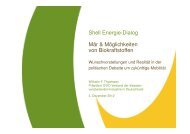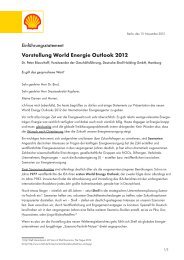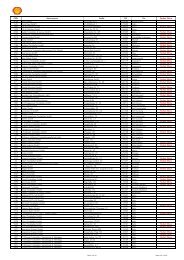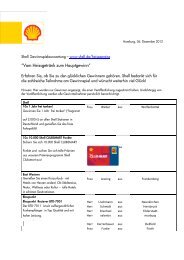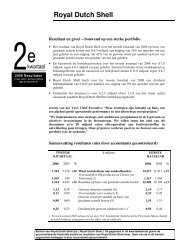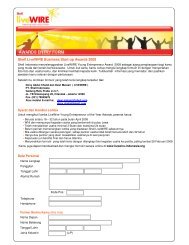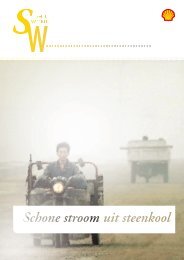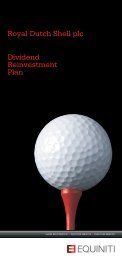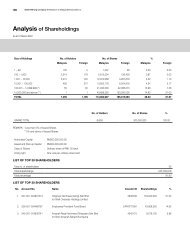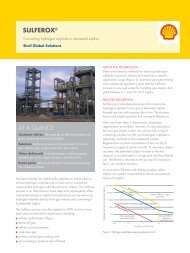ENVIRONMENTAL STATEMENT BARDOLINO DEVELOPMENT
ENVIRONMENTAL STATEMENT BARDOLINO DEVELOPMENT
ENVIRONMENTAL STATEMENT BARDOLINO DEVELOPMENT
Create successful ePaper yourself
Turn your PDF publications into a flip-book with our unique Google optimized e-Paper software.
Bardolino Development Environmental Statement<br />
Table i: Summary of seasonal environmental sensitivities for the proposed Bardolino<br />
Development Area<br />
Jan Feb Mar Apr May Jun Jul Aug Sep Oct Nov Dec<br />
Habitats Directive: Annex I Habitats<br />
There are no known Annex I Habitats in the vicinity of the proposed development area. The site does not lie within an area<br />
of gas seep and no pockmarks were identified during surveys at the proposed rig site and pipeline route.<br />
Currently, the closest possible SAC to the area is the Scanner Pockmark which is approximately 67 km from the Bardolino<br />
development.<br />
Habitats Directive: Annex II Species<br />
The harbour porpoise is the only Annex II species to be sighted within the vicinity of the proposed development area.<br />
Sightings have been recorded in the proposed development area during June and July, although porpoise may be present in<br />
the area throughout the year.<br />
Harbour porpoises are potentially vulnerable to noise, contaminants, oil spills and any effects on prey availability associated<br />
with the proposed development. The UK currently has no proposed SACs for harbour porpoises.<br />
Plankton<br />
Plankton is vulnerable to oil and chemical discharges. Planktonic organisms constitute a major food resource for many<br />
commercial fish species, benthic species and marine mammals, so any changes in their abundance, distribution and<br />
composition are important. There is also the possible bioaccumulation of pollutants ingested by plankton. Plankton is widely<br />
distributed over the North Sea and peak plankton productivity generally occurs in spring and summer.<br />
Benthic fauna<br />
Benthic fauna are vulnerable to disturbance of the seabed sediments which form their habitats, for example during the<br />
installation of pipelines and subsea structures, the anchoring of drilling rigs or vessels, and the discharge of drill cuttings.<br />
The effects of discharged cuttings on benthic fauna include physical smothering, the presence of potential toxins (heavy<br />
metals and hydrocarbons), and organic enrichment. Benthic fauna are an important food resource to demersal fish and<br />
shellfish. Benthic communities in the development area are similar to those found throughout the surrounding area of the<br />
central North Sea and no rare species are known to occur in this area.<br />
Finfish and Shellfish Populations<br />
Finfish and shellfish are vulnerable to pollution, such as oil and chemical discharges, the impact of drill cuttings, and the<br />
potential effects of seismic surveys, especially during the egg, larval and juvenile stages of their lifecycle. Demersally-<br />
spawning species and fish/shellfish that live in close association with seabed sediments are particularly vulnerable to any<br />
sediment disruption, for example during the installation of subsea structures, the anchoring of drilling rigs or vessels, and the<br />
discharge of drill cuttings.<br />
The proposed development area lies within spawning grounds for mackerel (May to Aug.), lemon sole (Apr. to Sep.), Norway<br />
pout (Jan. to Apr.) and Nephrops (Jan. to Dec., peak period is between Apr. and Jun.) and coincides with nursery grounds<br />
for haddock, Norway pout, blue whiting and Nephrops. Fish species present in the proposed development area are<br />
generally distributed throughout the North Sea.<br />
April 2008 Page iii


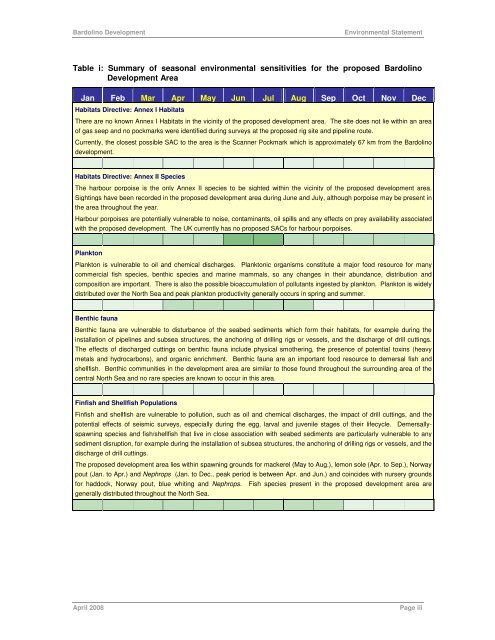
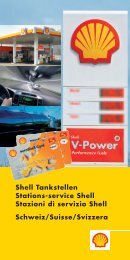
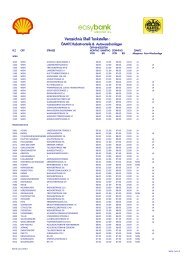
![Download Shell AutoGas Stationen [Stand: Januar 2013] (PDF](https://img.yumpu.com/9982753/1/190x245/download-shell-autogas-stationen-stand-januar-2013-pdf.jpg?quality=85)
